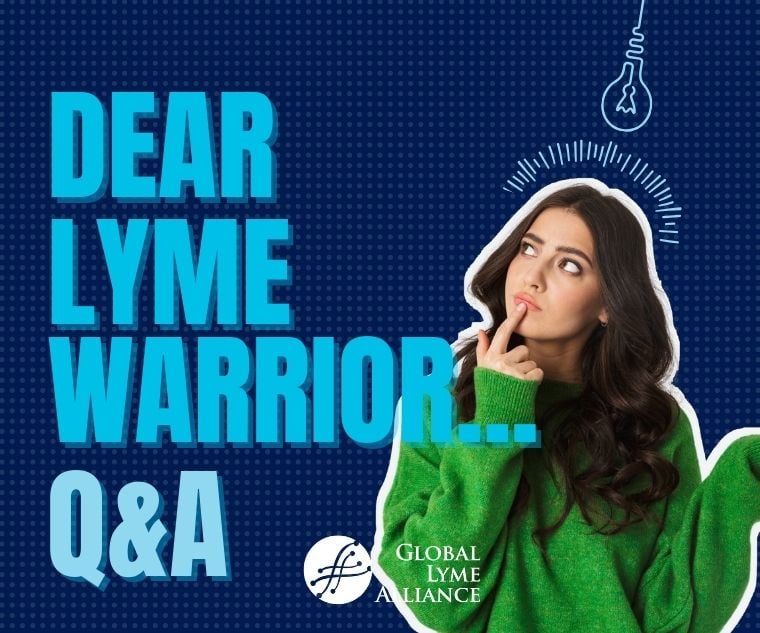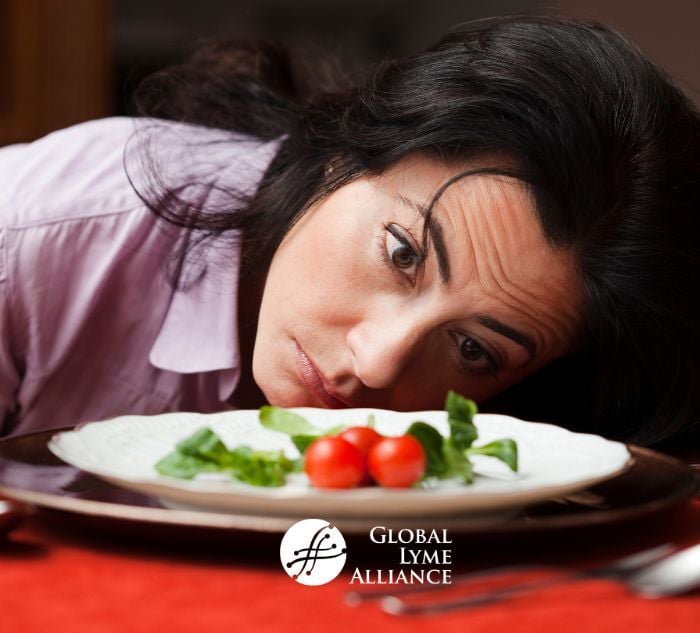
GLA's Chairman, Paul Ross interviews ozone therapy specialist Dr. Robbins, along with a Lyme patient, Charles Toepher who has experience with the treatment
Watch the interview:
"Recognizing the importance of evaluating novel treatment options for chronic Lyme disease patients, GLA is funding a study of the effects of ozone on Lyme bacteria at world-renowned Tufts University."- Timothy Sellati Ph.D., Chief Scientific Officer, GLA.
Stay tuned for updates on our research by signing up for our newsletter below.
Read the transcript of the video interview below.
note: The transcript has been edited and condensed for clarity.
Paul Ross: Dr. Robbins, I thought we'd begin with you giving us a brief overview of how you got interested in using ozone therapy for Lyme, and do you also consider it a treatment for other tick-borne disease?
Dr. Robbins: I've treated several thousand Lyme patients successfully, to the point where I believe we've put it in remission because we have to be able to prove it's gone. And I think we need a much better, more reliable test to prove that true.
Paul Ross: So, when a patient comes to see you, do you know from the outset or after an initial discussion and/or exam which type of ozone you're going to use?
Dr. Robbins: Everybody gets the simplest method first because the most important thing about the therapy is all these people are suffering. They find ozone as a last resort when other things have failed. So, I have to be very careful that they don't get hurt, and while in all my years and 380,000+ treatments that we've done intravenously, I have only had two patients that I had to stop treating because they had what I would call an allergic or hypersensitive response to ozone.
So, with that in mind, I can dose this very, very carefully. The best part about ozone is that it's completely adjustable to the individual. I like to tell patients, it's a little shocking the way I say it purposely, I go, "You're not the boss and I'm not the boss. Your body is our boss. Your body tells us whether it's going to be full speed ahead or whether we have to be far more gentle with you, and with a small percentage of the Lyme patients, I have to adjust every single treatment because of the way it may cause a Herxheimer reaction in them, and I'm sure there isn't a person listening to this that doesn't know what a Herx is.
So, to minimize that, we take actions we can talk about later, but more importantly, I adjust the therapy to the individual so they don't have to suffer any more than they already have, if possible. Herxing isn't a bad thing. It means it's working. We're killing off junk, but it's not a wonderful thing to go through either.
Paul Ross: So, you've treated an extraordinary number of patients. If you had to guess, what percentage of those are Lyme and/or tick-borne disease?
Dr. Robbins: It's about an average of about 100 new Lyme patients a year. I've only had one patient that had Rocky Mountain Spotted Fever, but I always find Lyme disease... because, remember, I'm not a LLD (Lyme-literate Doctor). I'm an expert in getting rid of it with ozone, but I'm not an expert on Lyme disease and every aspect of it. I'm still learning, I would have to say. And there’s so many co-infections. it's all these different co-infections that ozone is treating because when ozone enters your blood, it has the unique ability to destroy every bacteria and spirochete, every virus, fungus, yeast, mold, parasite, toxin, and harmful free radical, and even chelate toxic metal off nerve tissue, which regular chelation therapy can't do, and that's where all the damage is done, by toxic metals. It acts as an anti-inflammatory and as a pain killer.
It stimulates natural stem cell activity, so I call that fixing the unfixable, repairing the unrepairable. It has many other positive side effects, including hair and nails growing healthier and faster. People sleep better and have more energy all day long. It increases oxygen utilization at the cellular level by allowing the organelles, the mitochondria that make energy, to uptake oxygen and create more energy molecules. It has circulation benefits as well. So, it has a versatility that's caused much of its problem. It's so versatile, and it sounds too good to be true. So, that's ozone's biggest problem and worse, it's not a patentable medicine. If it were patentable, it would be in every hospital already. So, big pharma has no use for it whatsoever.
Paul Ross: So, I think the lesson to take away is that ozone is extremely effective for all tick-borne diseases.
Dr. Robbins: Yes, and while you're doing ozone therapy, you can be doing any pharmaceutical that you're already on or suddenly have to be put on, including antibiotics. You could be taking any nutraceuticals, which includes vitamins, minerals, herbs, homeopathy, Ayurvedic medicine, Chinese medicine. You could be doing any other therapy you want.
Paul Ross: Patients will be relieved to hear that they can use this while continuing their other treatments. So, it seems this isn’t only a treatment for people with chronic Lyme. What if someone is bitten by a tick and they immediately go on a short course of antibiotics. Is it beneficial for them to do ozone at that time?
Dr. Robbins: I've only had five "I’ve just got bitten" cases in my career with Lyme disease. When we can get them that close to it, we not only do intravenous, but we inject right into where the bite is and around it to kill the toxins and infection that still may be living there. That's just done once or twice and then the rest of it is just IV. In those cases, in a relatively short time, we stop treating them. They had absolutely no symptoms. So, the sooner they get in the better, but unfortunately, I only see Stage II and Stage III Lyme. That's what I mostly see. I also like to point out to people that there is a Stage IV, I call it, is death. Lyme is a life-taking disease. It is not a life-changing disease, and it has to be taken seriously that way.
Paul Ross: is there an average or typical number of treatments that one has to take in order to start seeing improvement?
Charles Toepher: I can actually address that. I speak for both my sister and I, who had chronic fatigue as well. After the first treatment it was immediate. We were like, “Hey, that's what feeling better is like." And that feeling went away after a couple of hours, but I said, "Okay, this actually can make a difference, so I'm going to go back for more and see what happens."
Dr. Robbins: I always want to point out that ozone, and for Lyme disease, particularly late-stage Lyme, is a marathon. It's not a sprint. But the good news, while I normally say there is no average, usual, or typical number of treatments that it takes to get rid of any medical problem in anybody, the fact is that by the time they've done a minimum of three or four treatments a week for about 24, 26 treatments, they will know it's working. They will see there is changes and benefits.
Ozone is medicine. It's just medicine, but it's in a different form than we're used to using medicine. Where normally, it's a capsule, powder, tablet, or liquid. This is in a gas form. And when we take medicine, we take it every day or usually several times a day, not just once a week, month, or a year. When you want to get rid of a very serious, life-taking disease, to expect that one or two treatments, one or two doses of medicine in a week is going to change everything, is very unrealistic. it's important to understand that not everybody receives ozone miracles. I wish everybody did, but it's important to recognize that.
Paul Ross: Most of the chronic Lyme sufferers, they experience a journey until they receive some sort of relief, usually often after seeing many doctors and trying many different protocols. Can you briefly describe your experience with Lyme, and perhaps you had other infections, and then how you ended up trying ozone?
Charles Toepher: Yes. I got sick when I was in college. I was on the crew club. So, they take you out to the woods, they leave you there, you go run back six, seven miles, and I ended up getting really ill. It turned out to be Borrelia and Lyme. Ultimately, they gave me a course of antibiotics, and generally, I was okay after that for probably about four or five years.
In my mid-20s, I got really sick again, and this time, I couldn't function. You feel like your brain is on fire all the time, and you have to sleep but you can't sleep, and you're tired all the time. It's like you're hungover, and I don't drink. That's how I felt pretty much 24/7, and luckily, I had a friend who recommended me to a fellow by the name of Martin Feldman.
And Martin, Dr. Feldman, did tests on me and said, "Oh, you have Epstein-Barr and Lyme disease." I got, "What's that?" Because I had no idea what this was. He said, "It's a tick-borne disease. The other is not, but we have to treat you with IV therapy. We're going to change your diet. We're going to give you Vitamin B shots. We're going to supplement you." And so, I went through that and there was improvement, quite a bit of improvement.
Paul Ross: How long did it take?
Charles Toepher: About a year and a half. I mean, I was really not well. And then, again, things sort of settled down and then 2006, for me, August, because I remember because I woke up with swelling around my eyes. And I ended up taking Chinese medicine because I spent two years working in China and had access to Chinese medicine. But after that, really until probably about 2016, I tried acupuncture, vitamin therapies, and Panchakarma, which actually was temporarily helpful.
Paul Ross: Can you tell us about what that is? I'm not familiar with it.
Charles Toepher: Panchakarma is traditional Indian medicine, and it up-regulates the function of your liver to help you detoxify. You're fed a highly alkalizing diet and very specific herbs for the period of time that they're treating you. They actually give you medicated oils, which are massaged into the body, into the head. It actually really helped, but it didn't help me for a long enough period of time, and was pricey. But in 2016, a friend of mine mentioned ozone therapy, and so I started doing research on it because being in the environmental cleanup business, we would clean up oil spills. We would work on cleaning up radiological contamination, and also, funny enough, we used a bacteria to eat the oil spills, in a machine and so, I understood, conceptually, how bacteria functioned.
So, I read about it and I went to see Dr. Robbins as a result. The first time I saw him, he said, “Okay. You need to come for at least 35, 36 treatments. But you need to come consistently three times a week for this, and then we're going to reevaluate at the end of that time." Dr. Robbins also had me take a liquid probiotic, which really were helpful and worked with the treatment, even though past probiotics had given me some kind of intestinal distress.
Additionally, because you become friendly with people there, and I met somebody who said to me, "Listen, you should also consider going to this Chinese medicine person, traditional Chinese medicine." And what I found was that Dr. Robbins' treatments became more effective with me taking the Chinese herbal medicine that she was prescribing for me as well. Over time I saw great improvement. Now I have mostly good days and once in a while I’ll have a bad health day.
I continued the probiotic, which is interesting because, literally, the equipment that we built to clean sewage and clean oil-contaminated water, conceptually operated the same way. The bacteria would sort of populate this iron stomach or intestine and would eat the food. And so, the probiotic, which ultimately Dr. Robbins made, Doctor's Biome, he calls it, worked very effectively with the treatment because the ozone gets rid of everything, the bad bacteria and the good bacteria, and so, you need to repopulate the good bacteria. And especially if you took as many antibiotics as I was given. It sort of elevates your sense of wellbeing. So, the Chinese medicine, the ozone therapy, and also I did what Dr. Robbins calls a glute sandwich. So, I had Glutathione, first the ozone therapy, then Glutathione injected, which was wonderful for me.
The other thing that was interesting is, I had to get used to feeling better because you get used to feeling bad all the time, and so you almost want or are looking for that familiar feeling. And so, part of the journey is being willing to go to a place you either haven't been for a very long time or you don't remember, and having the confidence to continue on that path. Part of that also was meditation. Some of the meditations that Dr. Joe Dispenza does, I like to use because it, from a scientific standpoint, makes sense to me, and everything I do. I mean, I research everything to death because that's a big part of what we do. I'm a business person, but everything we do has a basis in science, whether it's environmental sciences or health sciences, and so, I really need to know.
Paul Ross: Dr. Robbins, when Charles came to see you, did you find him to be a typical Lyme patient or was he sicker than most? What were your initial impressions?
Dr. Robbins: Well, no. I would say more that's what I see. It's very typical. Many of the Lyme patients today have other co-infections like Epstein-Barr virus, very common. Mold toxicity seems to be something, in the last couple years, that I see quite a bit of, and I'm published on mold toxicity, actually. The Online Journal of Alternative and Complimentary Medicine on ozone and its ability to eliminate mold and mixed mold mycotoxicosis. So, in any case, these co-infections, that's why ozone's working because it's fighting and attacking all these different things.
Dr. Robbins: And there's only three things patients with ozone therapy have to do. The first is to be well hydrated. The second is to take vitamin C, which has become a very interesting thing with Lyme. It's almost a diagnostic test for it, in some patients. Even small amounts of it can cause a person to Herx. No other kind of medical problem seems to be hit by Vitamin C that way. The third is to change the diet. We have to put good biome back in.
Paul Ross: Charles, did you Herx from the treatment, and if so how did this Herxing compare to Herxing from you've had many different treatments?
Charles Toepher: Yes, I have had a Herx reaction. It got a little bit of tightness in the chest, so I sat with an oxygen cannula for about 10 minutes and then I was fine. Or if I was a little too aggressive and I’m often like let's do more! – which isn't always the best thing to do. In that case, you go home and you go, okay, I kind of overdid it. I would do breathing exercises, cold therapy (an ice cold shower or an ice bath), and meditation. A sauna, but far infrared saunas were helpful when I wouldn’t feel great after a treatment, which would happen every once in a while. But in general, never had any issues. The treatment was usually about 10 minutes, 15 minutes. That's it. And then, I'd sit there, have some green tea, which seems to help a lot.
Paul Ross: From the time that you first saw Dr. Robbins to the time you stopped, or perhaps you're continuing to use ozone, you could let us know how long until you felt like you were well?
Charles Toepher: Probably after the first 30, 40 treatments, I felt like a human being again, but I really wanted more, so I continued. I then stopped for two years because I was fine, but started having weird balance issues where going down stairs became a challenge, and so I went back for more treatment and did the herbs, and then just continued. And what I found is that there hasn't been an endpoint where I've stopped getting better or stronger, and I’ve used a fitness tracker to mark my progress.
Now, I'm a once-a-month guy, so to speak, for ozone, and I am a once-every-other-week guy for a Vitamin C IV, and that has worked, and I've continued with doing let's say, and infrared sauna once a week or twice a week as well. When I have access to the Chinese herbs, I take them, but the funny thing is, I don't need them anymore. I dedicate three hours a week to treatments that make my life better, and it has made a meaningful difference in my life and the quality of my life and the energy I can give to my work and to other people around me.
Paul Ross: I think for many who will be viewing this, this story that you're telling will be so very reassuring and I imagine there will be some converts, some people who will be very, very eager to try this therapy. Before we close, is there anything that either of you would like to add, something that we should have covered that we didn't cover?
Dr. Robbins: No moral or ethical doctor should ever promise or guarantee a result. I usually tell patients if a doctor promises you 100%, leave skid marks getting out of that office. The fact of the matter is, with Lyme disease, if you stay with it and you're consistent with care, I have to say, I have not failed yet. The primary goal is to get you well so you can live your life again, and that's why I'm doing this at my age because we’re changing people's lives.
Charles Toepher: I would second what Dr. Robbins says. It's about being consistent. There definitely were times where I really didn't feel great, but I went anyway, and then the sun comes out, as it were a bit. The other thing I would say is not ozone is created equal, in terms of who's applying it, and again, I've done a lot of research, there's a standard of care that I found with Dr. Robbins that, when you look around, what's available in the United States is not always so consistent. So, in terms of both the equipment, the knowledge. And so, that's the only caution I would say.
Paul Ross: Well, on behalf of GLA, we want to thank the two of you. I think this has been an extremely informative session and I trust that the viewers will find it to be as enlightening as I can tell you I have found it to be. Our guests today were Dr. Howard Robbins and a patient of his, Charles Toepher. Again, on behalf of GLA, thank you both of you. Very informative and we hope to continue bringing you, that is our audience, additional alternative treatments.
***
To reach Dr. Robbins for questions: Email OzoneDoctor@yahoo.com or call: 212-581-0101
To read more blog posts, click here.
The above material is provided for information purposes only. The material (a) is not nor should be considered, or used as a substitute for, medical advice, diagnosis, or treatment, nor (b) does it necessarily represent endorsement by or an official position of Global Lyme Alliance, Inc. or any of its directors, officers, advisors or volunteers. Advice on the testing, treatment or care of an individual patient should be obtained through consultation with a physician who has examined that patient or is familiar with that patient’s medical history.







